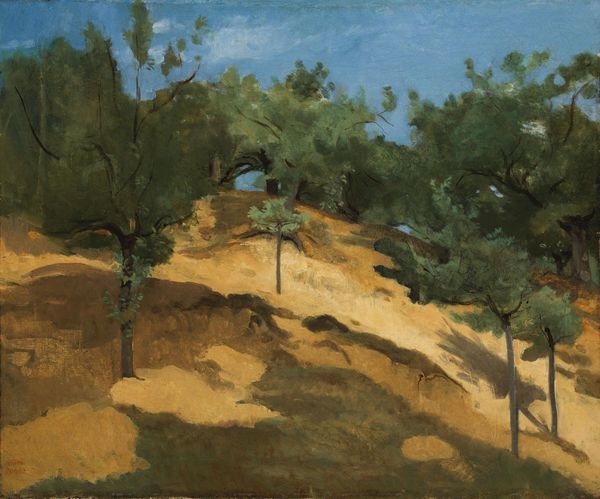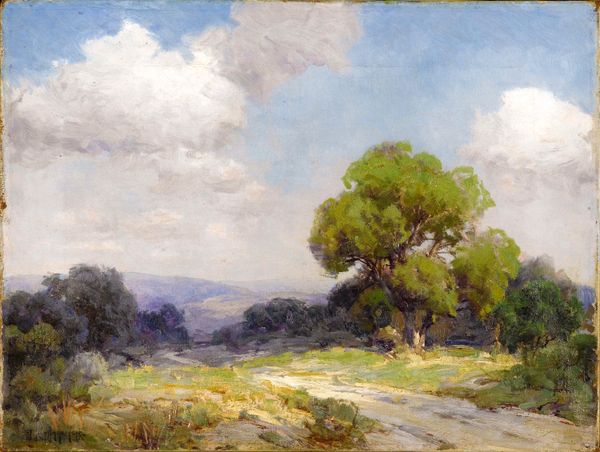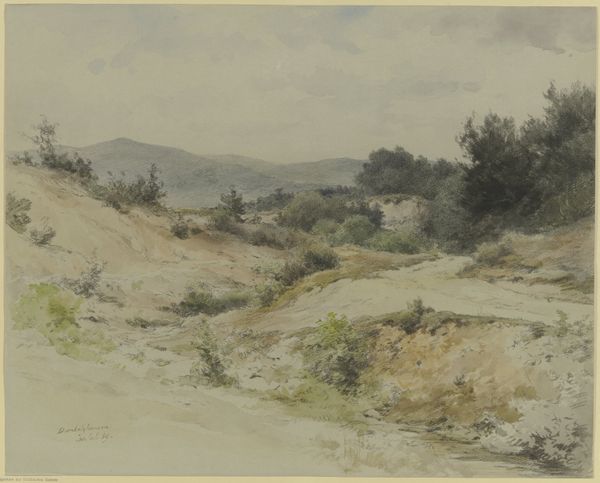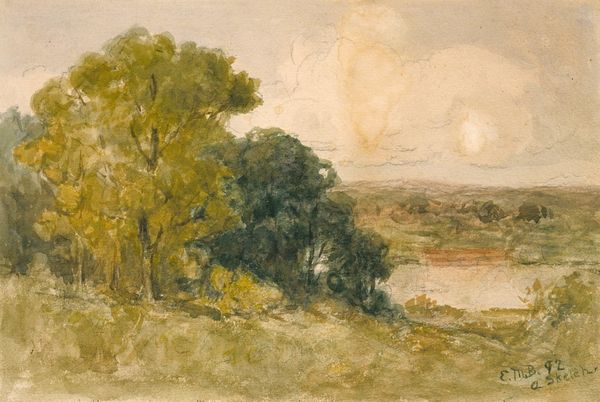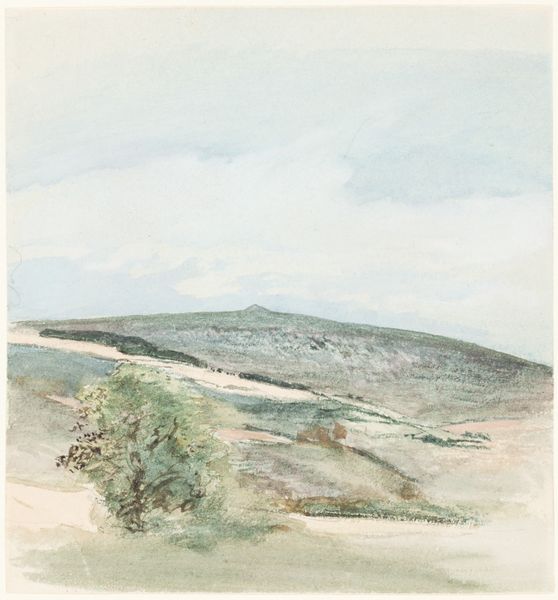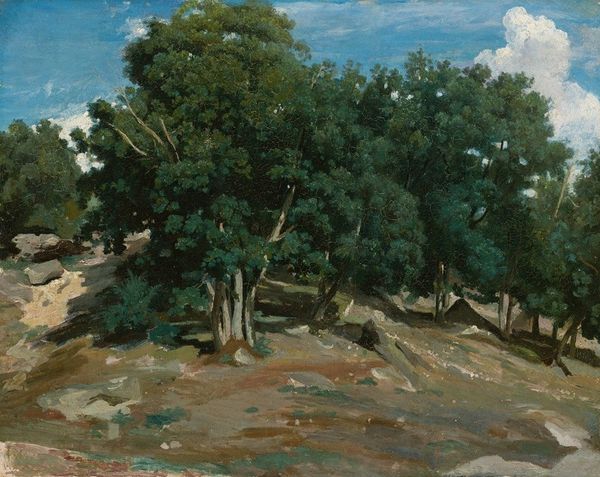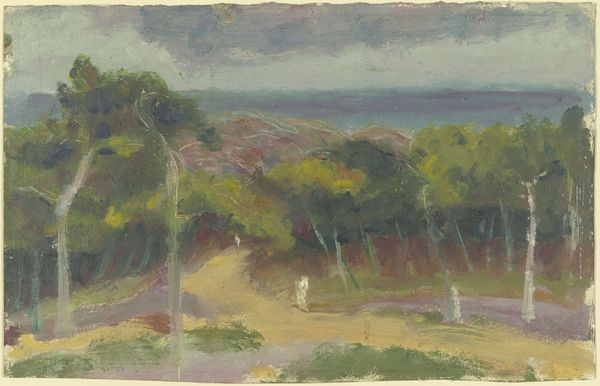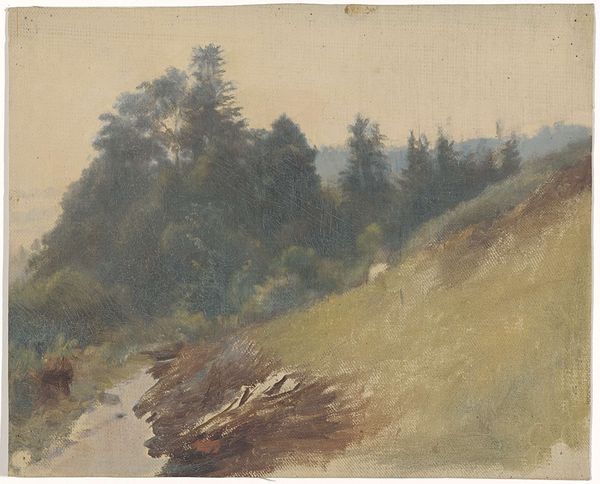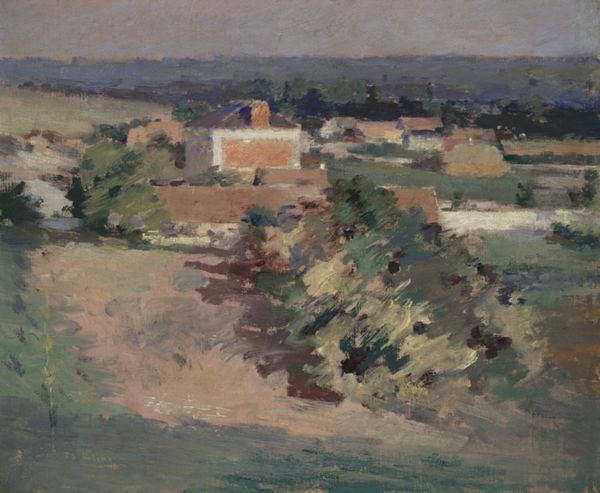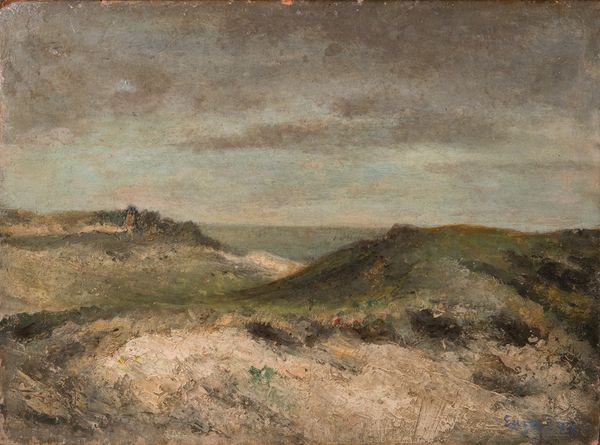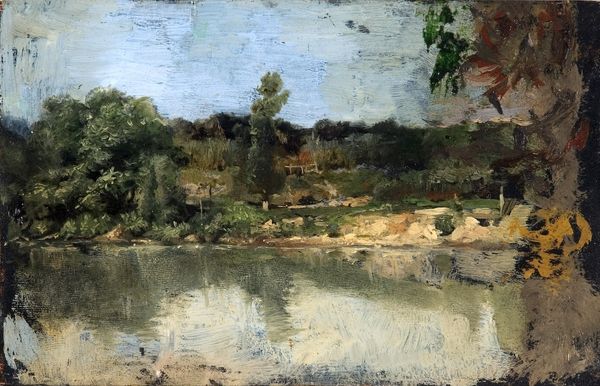
Copyright: Public domain
Curator: Here we have Émile Friant's "Pine Trees (Malzéville Plateau)," painted in 1879, a jewel rendered in oil on canvas. Editor: It feels utterly tranquil. The way the light catches the tops of the pines… it’s almost meditative. There’s a dusty haze too; everything shimmers as it leads back toward the hazy skyline. Curator: Friant clearly embraces the tenets of plein-air painting, doesn’t he? You sense the immediacy of capturing the landscape directly, that particular moment's light and air. The trees themselves almost look like figures guarding a path into the distance. Editor: Pine trees, since ancient times, are visual metaphors for resilience, constancy, and, perhaps surprisingly, immortality. Consider how they endure harsh conditions, always pointing skyward… here, their dark, watchful silhouettes set off the fading glow. It evokes a feeling of enduring stillness. Curator: Yet it's not simply a static image. I’d suggest that the way the path seems to lead us towards the distant view hints at journeys, perhaps the artist's own explorations—both physical and artistic—and then also the viewer’s eye traveling far to get lost somewhere at the horizion. Editor: Precisely! And note that, despite being labelled “Impressionistic,” it isn’t just dappled light for the sake of dappled light. Friant gives the symbols their due weight, lending the romantic image gravitas. Curator: Absolutely. So much Romantic painting romanticized dramatic locations, but this unassuming plateau receives just as much emotion here, which says a lot about where one can choose to locate the profound. Editor: That emotional depth definitely makes it stick. A perfect encapsulation of an idea within the trees, and us as observers. Curator: Indeed. Perhaps our silent communion with it brings forth the best interpretation of all.
Comments
No comments
Be the first to comment and join the conversation on the ultimate creative platform.
